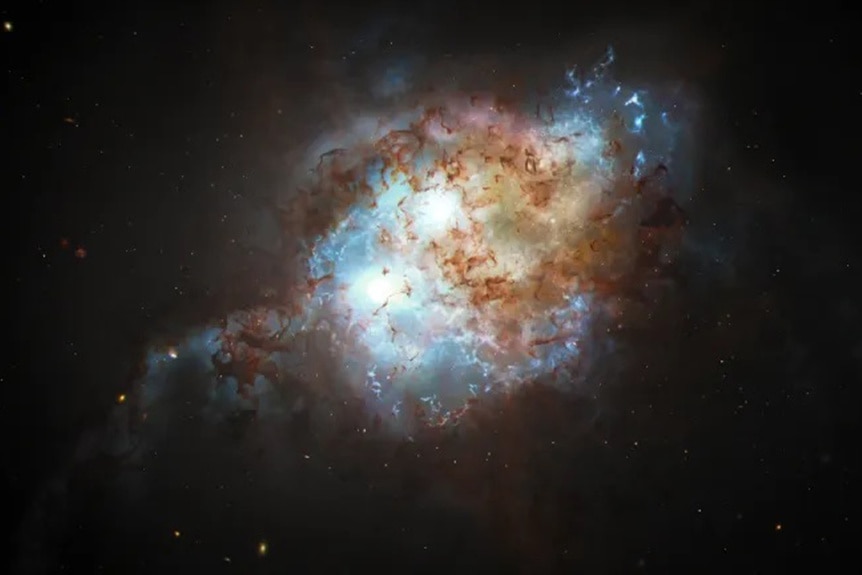Create a free profile to get unlimited access to exclusive videos, sweepstakes, and more!
Colliding Galaxies: Astronomers Spot Oldest Merging Quasars Ever Seen
More than 12 billion light-years distant, the oldest merging quasars ever observed illuminate the early universe.
When Oppenheimer and his gallery of atomic scientists built their bomb, they were tapping into a power which is usually only unleashed on cosmic scales. The processes which occur inside atomic bombs are the same which occur in the hearts of stars. Even now, nearly a century later, atomic power is the most energetic (destructive) process within our technological grasp, but even our most powerful weapons are laughable when compared to the explosive power of the universe.
Recently, a team of astronomers accidentally discovered a pair of quasars in the process of smashing into each other, less than a billion years after the birth of the universe. It’s the oldest duo of its kind and it’s helping astronomers understand our universe’s murky history. The discovery was published in the Astrophysical Journal Letters.
For More on Quasars:
A Distant Quasar has the Most Powerful Wind Ever Seen. And Yeah, It’s a Doozy.
A Quasar at the Edge of the Observable Universe Shines with the Light of 10 *Trillion* Suns
Another Record-Breaking Quasar with a Black Hole That’s *Too* Supermassive
Astronomers Spot Merging Quasars at Cosmic Dawn
Astronomers have long suspected that the early universe was a violent place filled with larger galaxies gobbling up smaller ones. Because the universe was a smaller place in the past (it’s constantly expanding, even now), opportunities for collisions may have been more common, and we should be able to see evidence of those collisions in quasars.
Quasars have one of the coolest but least decipherable names in all of astronomy; here’s the deal. Most large galaxies, like the Milky Way, have a supermassive black hole in their center, which acts like a fulcrum around which the rest of the galaxy spins. Many of those black holes are hard to spot because they aren’t actively consuming matter. Black holes are notoriously invisible, but we can infer them from their gravitational influence or, if they are active, from the light they cast as matter falls into them.
An active black hole, one which is currently consuming stuff, will acquire an accretion disk of matter just outside its event horizon. As that matter orbits, it heats up and starts glowing, circling the black hole in a luminous bullseye. When a supermassive black hole in the center of a galaxy is active, it’s called an active galactic nucleus (AGN), and when an AGN is especially active and bright, it’s called a quasar.
It might seem like a narrow distinction, an AGN or a quasar (an especially bright AGN), but quasars are wicked bright. On average, a quasar emits thousands of times the light of the entire Milky Way galaxy. Astronomers were combing through data from the Hyper Suprime-Cam (HSC) Subaru Strategic Program survey when they stumbled on a couple of red splotches hiding in the background. They later identified those splotches as a pair of distant galaxies containing quasars.
Analysis of data from the Subaru Telescope and Gemini North telescope measured a redshift of 6.05, placing the quasar duo less than a billion years after the beginning of the universe. Redshift is a way of measuring how much the light has been stretched by the expansion of the universe as it traveled from its place of origin to the telescope’s instruments. It tells astronomers where the light came from in both space and time.
At the time the light left them, the two quasars were about 12 kiloparsecs (roughly 40,000 light-years) apart and getting closer. The telescopes revealed a UV structure between the two, suggesting the quasars, which each have an estimated mass of 100 million Suns, are in the process of merging. Future observations could reveal even more information about the distant past and how the present universe came to be.
See the destructive power of the cosmos in Oppenheimer, available now from Universal Pictures.




















